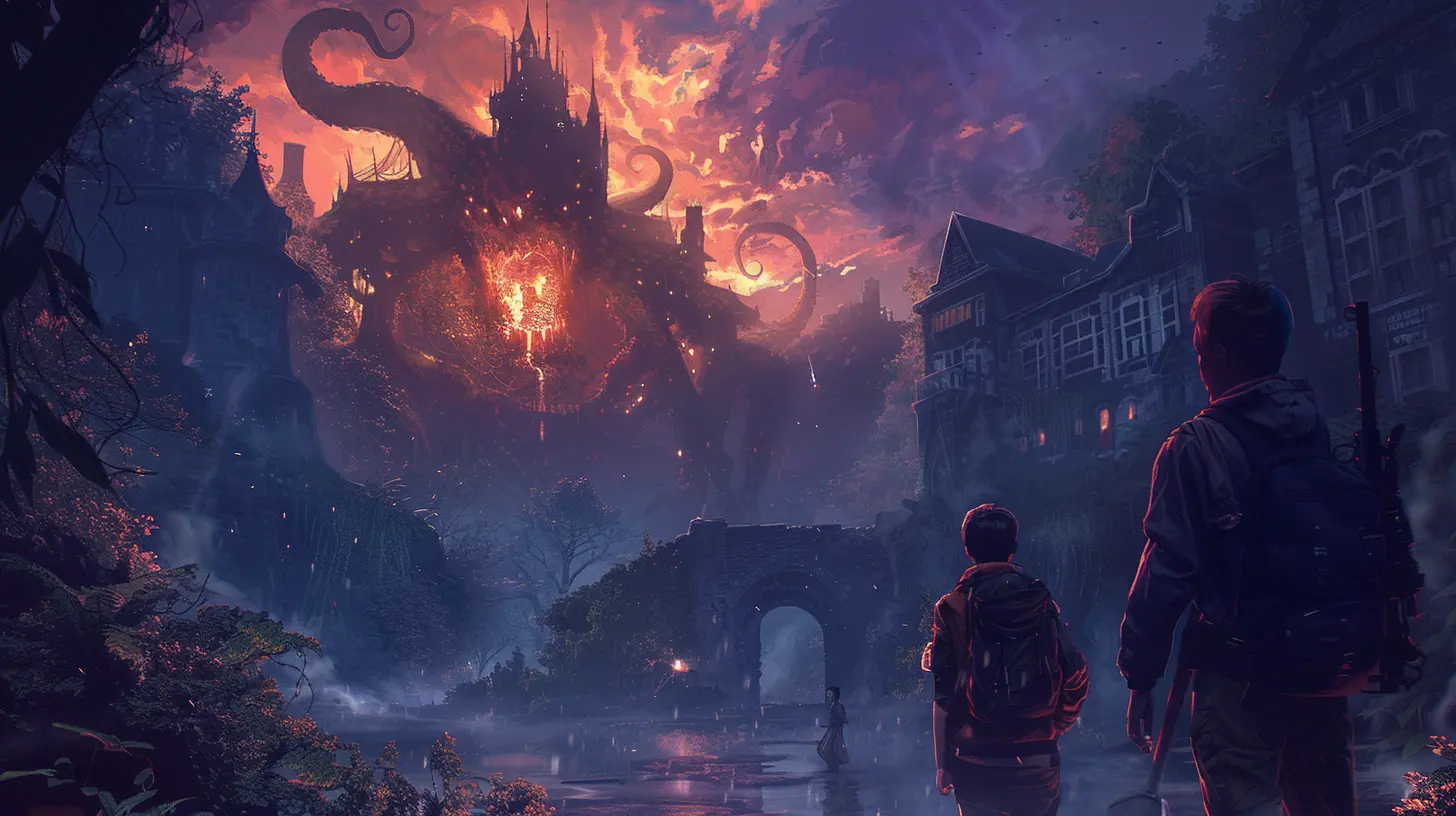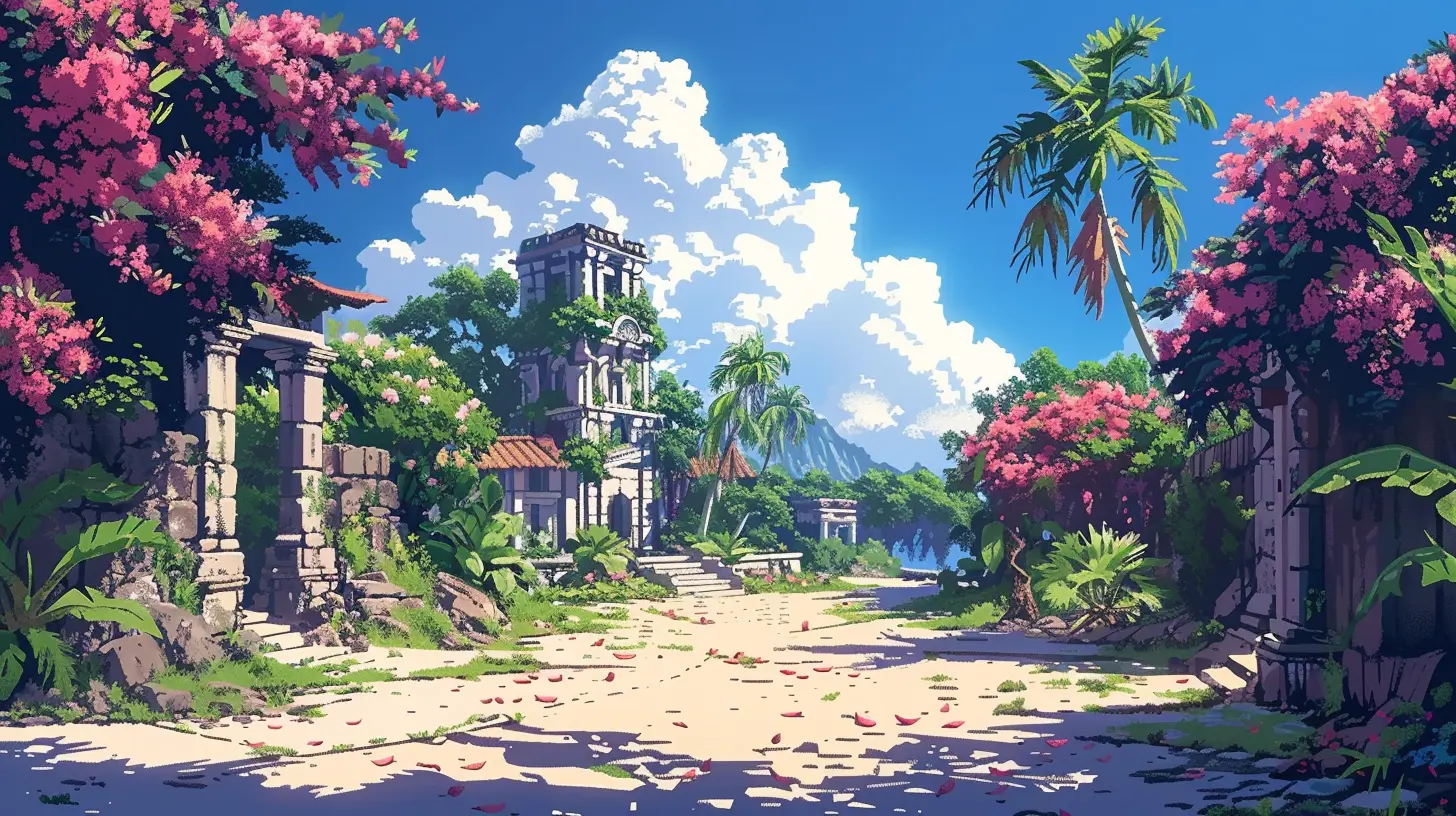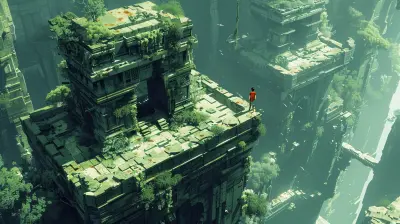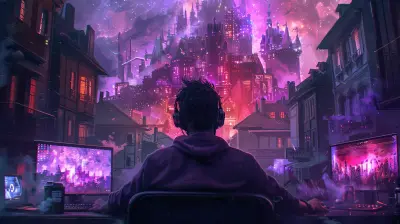29 March 2025
Adventure games. Just reading those two words probably takes you back to a simpler time, right? Maybe you're picturing pixelated characters trudging through dangerous terrain, solving puzzles, uncovering mysteries, or engaging in witty banter. Or maybe you're thinking of the more cinematic, story-driven epics of recent years. Whatever comes to mind, one thing's for sure—adventure games have come a long way. Like, we're-talking-lightyears kind of long.
So, let’s grab an energy potion (or just coffee if you’re low on stamina) and dive headfirst into how adventure games have evolved over the decades. Buckle up, because this is going to be one wild, nostalgia-fueled ride.
The Text-Only Era: When Imagination Ruled (1970s-1980s)
Before we had fancy graphics and Hollywood-level voice acting, adventure games were all about words. Yep, just words on a black screen, usually in all caps because subtlety wasn’t a thing yet. These were the text-based adventure games that birthed a genre.Take “Colossal Cave Adventure” (1976) for example. This granddaddy of adventure games dropped players into a labyrinth of caves armed with nothing but their wits and a willingness to type commands like “GET LAMP” or “GO NORTH.” Back then, your keyboard was your sword, and your imagination provided the graphics.
This era may seem primitive now, but it laid the groundwork for everything that followed. It was all about freedom—players could explore a world (albeit in their minds) without being told exactly how to do it. Frustrating? Sometimes. But rewarding? Absolutely. If you’ve ever spent hours trying to figure out what “XYZZY” meant only to have it unlock something magical, you know the thrill.
The Pixel Party: Point-and-Click Adventures Take Over (1980s-1990s)
Fast forward to the 1980s, and suddenly, adventure games got a facelift. With the arrival of PCs like the Macintosh and IBM’s PC, developers could finally add visuals to their creations. And thus, the point-and-click adventure game was born.Ever heard of Sierra Entertainment? These guys were the pioneers of this era, dropping classics like “King’s Quest” and “Space Quest”. These games weren’t just fun—they were an art form. Every pixel felt like it was hand-painted with love and a bit of blood, sweat, and tears. They let players roam medieval kingdoms, outer space, or even haunted mansions, solving puzzles and interacting with quirky characters. Honestly, it was like diving into an interactive storybook.
Oh, and let’s not forget LucasArts. They brought us absolute masterpieces like “Monkey Island” (1990) and “Day of the Tentacle” (1993). These games didn’t just rely on puzzles—they leaned heavily on humor. "Monkey Island," for instance, taught us that sword fighting could be all about insults. ("You fight like a dairy farmer" might still be one of the greatest burns in gaming history.)
This era was lightning in a bottle. It nailed the balance between storytelling and player engagement. Sure, some puzzles were absurdly obtuse (looking at you, rubber-chicken-with-a-pulley-in-the-middle), but that was part of the charm.
The 3D Revolution: Adventure Games Go Mainstream (Late 1990s-2000s)
As the gaming industry leveled up technologically, adventure games evolved too. With 3D graphics becoming the norm in the late '90s, the genre had to adapt or risk being left behind. Cue the arrival of some genre-defining gems.Enter “Grim Fandango” (1998). This LucasArts classic blended film noir, Mexican folklore, and witty dialogue into a 3D package that blew everyone’s minds. It showed us that adventure games could mature with the times while keeping their heart intact.
Then there was “The Longest Journey” (1999), where the focus shifted to storytelling and memorable characters. Suddenly, adventure games weren’t just about solving puzzles—they were about feeling something. They were about immersing players in worlds so detailed you'd lose hours without even noticing.
However, here's where the adventure genre hit a bit of a bump. As the 2000s rolled in, action-packed games like shooters and RPGs began dominating the scene, leaving adventure games struggling for attention. The genre wasn’t dead, but let’s just say it was on life support. A few gems—like “Syberia” and “Myst IV”—kept the torch burning, but the glory days seemed like a distant memory.
The Resurgence: A New Era for Adventure Games (2010s-Present)
Just when people were ready to write adventure games off as relics of the past, something incredible happened—the genre came roaring back, bigger and bolder than ever. It wasn’t just surviving; it was thriving. But how?Two words: Telltale Games. No one can talk about modern adventure games without giving props to these guys. With their episodic, choice-driven masterpieces like “The Walking Dead” (2012) and “The Wolf Among Us”, Telltale basically redefined what an adventure game could be. Choices mattered. Relationships mattered. And let’s be real—crying over fictional characters mattered a lot.
But Telltale wasn’t alone. Indie games also stepped up to show everyone the genre still had teeth. Titles like “Life is Strange”, “Oxenfree”, and “Firewatch” brought deeply emotional stories and unique gameplay mechanics to the table. They tapped into something universal—people’s desire for meaningful experiences. Who needed explosions when you could have heart-to-heart conversations?
And let’s not ignore the influence of platforms like Steam and the Nintendo Switch. They made adventure games accessible. Suddenly, indie developers could share their visions with the world, no triple-A budget required.
One major trend in this era: the blurring of genre lines. Modern adventure games aren’t just puzzles and dialogue trees anymore. They borrow elements from RPGs, horror games, and even action games. Think “The Last of Us” or “Disco Elysium”—these aren’t just great adventure games; they’re some of the best games ever made, period.
What’s Next for Adventure Games?
So, where does the road lead from here? Honestly, the future of adventure games feels brighter than ever. With advancements in tech like VR and AI, the potential is limitless. Imagine stepping into a fully immersive adventure game where every character you meet has their own personality, shaped by AI. Creepy? Maybe a little. Cool? Heck yeah.Oh, and let’s talk about storytelling. As new generations of gamers come into the scene, there’s a growing demand for diverse, inclusive stories. Expect to see adventure games told from perspectives we’ve never experienced before—stories that challenge us, move us, and stick with us long after the credits roll.
Here’s the bottom line: Adventure games are proof that gaming isn’t just about killing time—it’s about connecting with stories, characters, and worlds in ways no other medium can match. And let’s be honest, we’re all here for it.
Final Thoughts: The Legacy and the Love
Adventure games have been through a lot over the decades—peaks, valleys, and everything in between. From clunky text-based adventures to cinematic masterpieces, they've remained a genre that refuses to be forgotten. Why? Because they’re more than just games. They’re stories we live, experiences we cherish, and memories we carry with us.So whether you’re a die-hard fan of “Monkey Island” or a sucker for the gut-punching feels of “Life is Strange”, you’ve been part of this incredible journey. And the best part? The story’s not over yet.




Oriana Morgan
What a delightful stroll down memory lane! It's fascinating to see how adventure games have transformed from pixelated quests to immersive narratives. Each decade brings its own flavor, capturing our hearts anew. Here’s hoping the next evolution continues to blend nostalgia with innovation. Adventure awaits, and I can’t wait!
April 1, 2025 at 4:03 AM